When it comes to beautiful places, Greece ticks many boxes. You could be captivated by wildflowers growing around ancient temples, or the graceful architecture of Venetian towns, the legacy of Venetian rule here. Perhaps the medieval majesty of Rhodes will be your lasting memory, or the impossibly pretty port of Hydra.
There’s a wild beauty, too, in the white-sand sweep of Greece’s beaches, all the more dazzling against the glittering sapphire of the Aegean Sea. In a country blessed with craggy mountains, natural harbors, and dramatic volcanoes, you’re constantly surrounded by exquisite scenery.
Here are 12 of the most beautiful places in Greece, created by humankind and by nature.
Acropolis, Athens
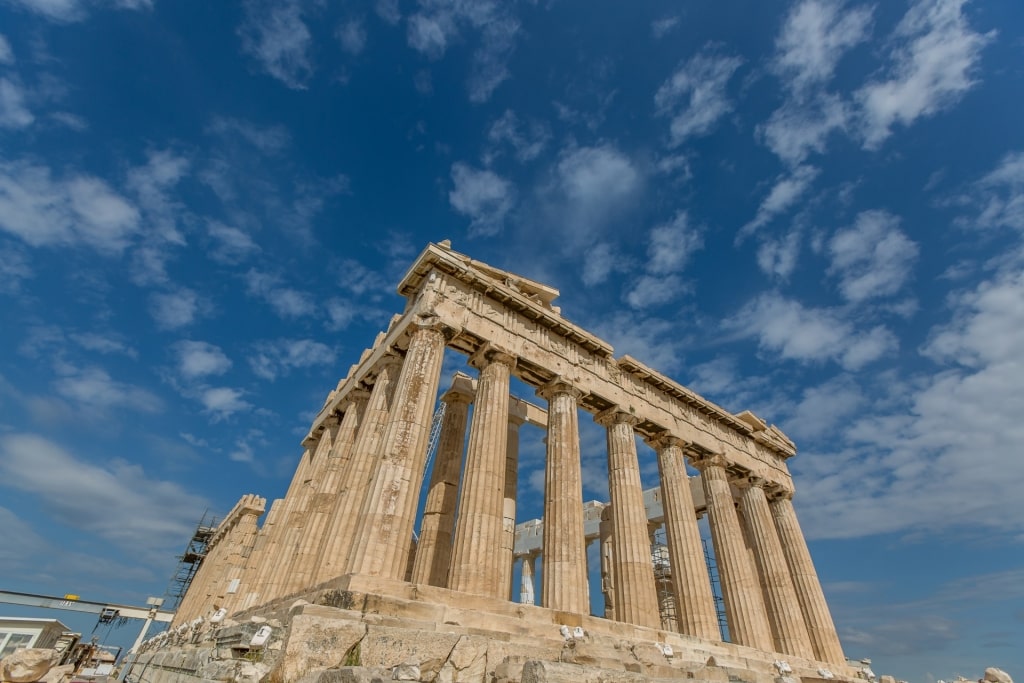
Acropolis, Athens
If you’re planning to visit Greece for the first time, it would be remiss to talk about beautiful places without starting with the capital’s iconic Acropolis. Topped by the Parthenon, this ancient site, alongside Rome’s Colosseum, remains probably the most recognized in Europe, if not the world.
Athens itself can be chaotic, hot, and bustling with the millions of people who live and work here, but the Greek landmark stands majestically and silently overlooking the city from its perch on a limestone hill.
The short hike to the summit is through Mediterranean pine and along marble slabs that have been laid here for millennia.
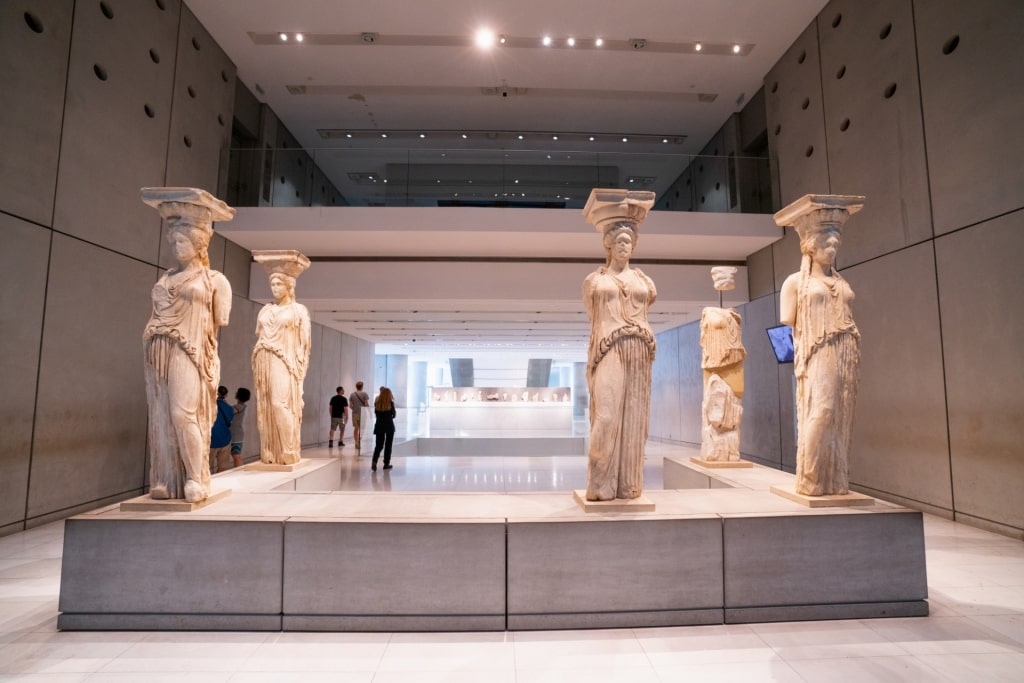
Acropolis Museum, Athens
At the summit itself, the ruins of this ancient citadel are truly breathtaking, as are the incredible vistas that stretch from the Athenian Riviera to Mount Parnitha to the north.
While here, make sure to visit the fabulous Acropolis Museum to find out more about the history of the site, as well as the best views of the Acropolis itself from the museum café’s terrace.
Hydra Town, Hydra
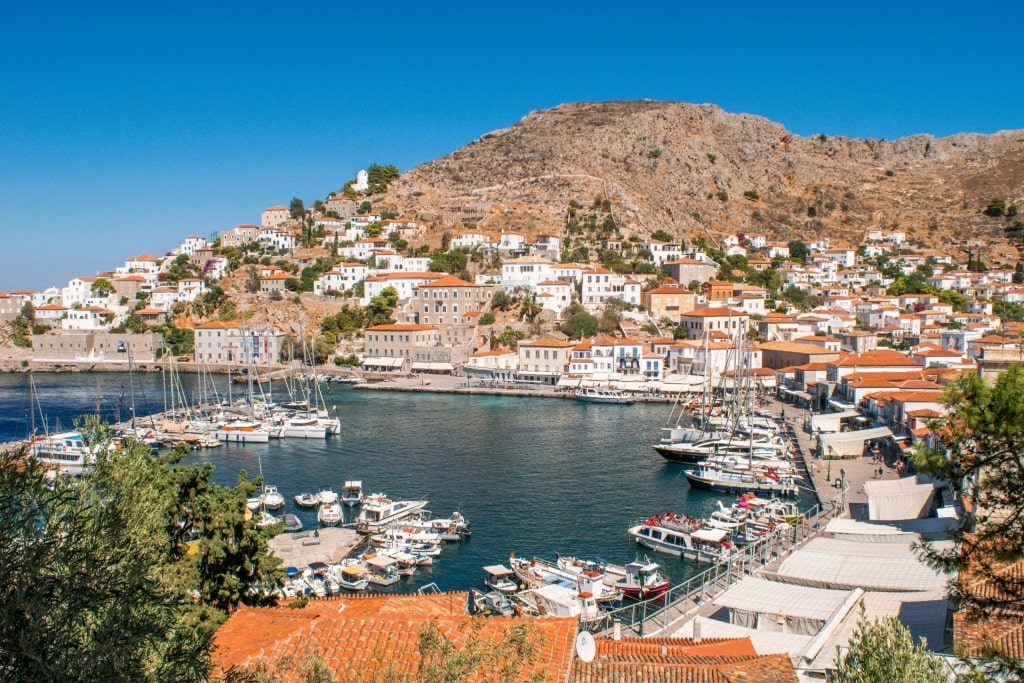
Hydra Town, Hydra
Greece is home to thousands of islands, but one of the most beautiful lies just a short hop from Athens in the Saronic Gulf.
Hydra is a favorite weekend getaway of both well-heeled Athenians and international travelers, lured by the fact that the island’s creative community has in the past included both Leonard Cohen and Sophia Loren.
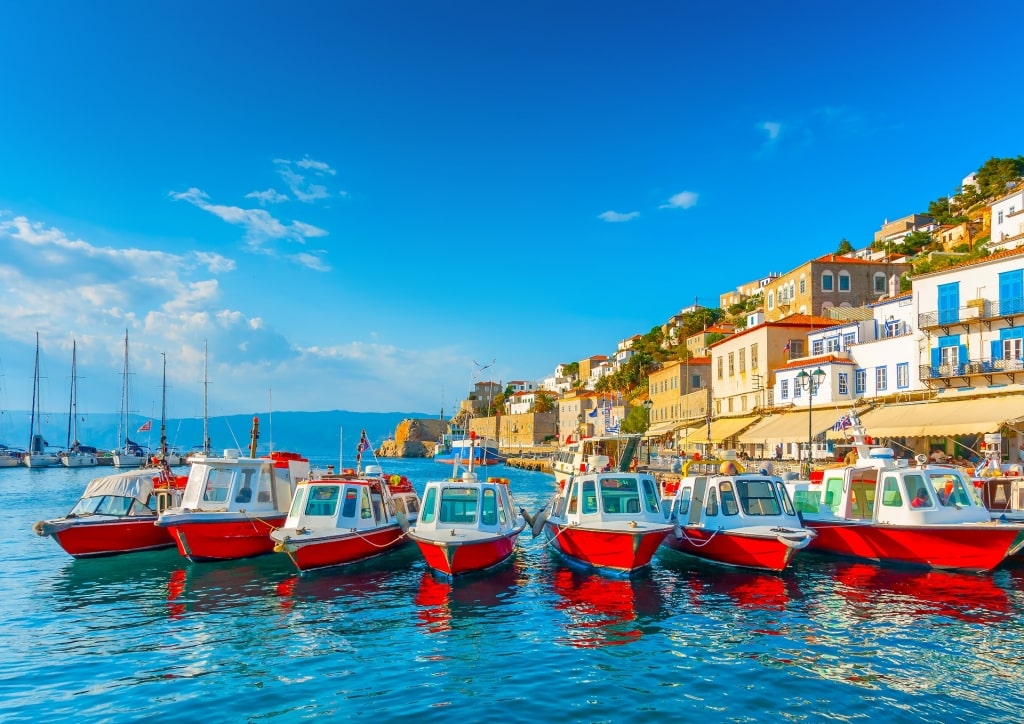
Hydra Town, Hydra
The big attraction is Hydra Town, the island’s capital and main port. Save for a handful of hamlets, hiking paths and some stunning beaches, there is little else on the island, so life focuses around the harbor.
The port, one of the prettiest places in Greece, is set on a natural arc fronted by fish tavernas and cafés and this impossibly pretty façade is backed up by a tangled maze of streets, many lined with the elegant neoclassical mansions of 18th and 19th-century sea captains who once made their homes here.
Rhodes Old Town, Rhodes
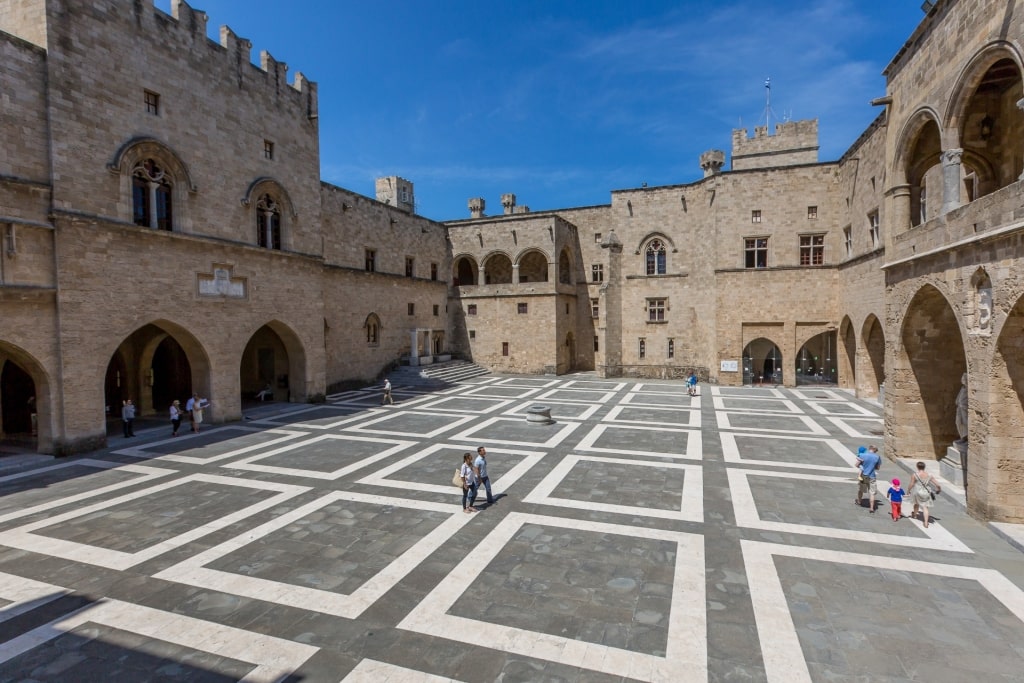
Palace of the Grand Master of the Knights in Rhodes Old Town, Rhodes
Rhodes, the capital of the Dodecanese islands on Greece’s southeastern border, has been the dominant presence in the group since antiquity thanks to its strategic position between Europe, Asia and Africa.
While those ancient times certainly left their mark on history—the 280 B.C. Colossus of Rhodes statue was said to be one of the Seven Wonders of the Ancient World—it was the arrival of crusader knights in the early 14th century that led to the building of the majestic Rhodes Old Town. Today, this is said to be the largest active medieval town in Europe.
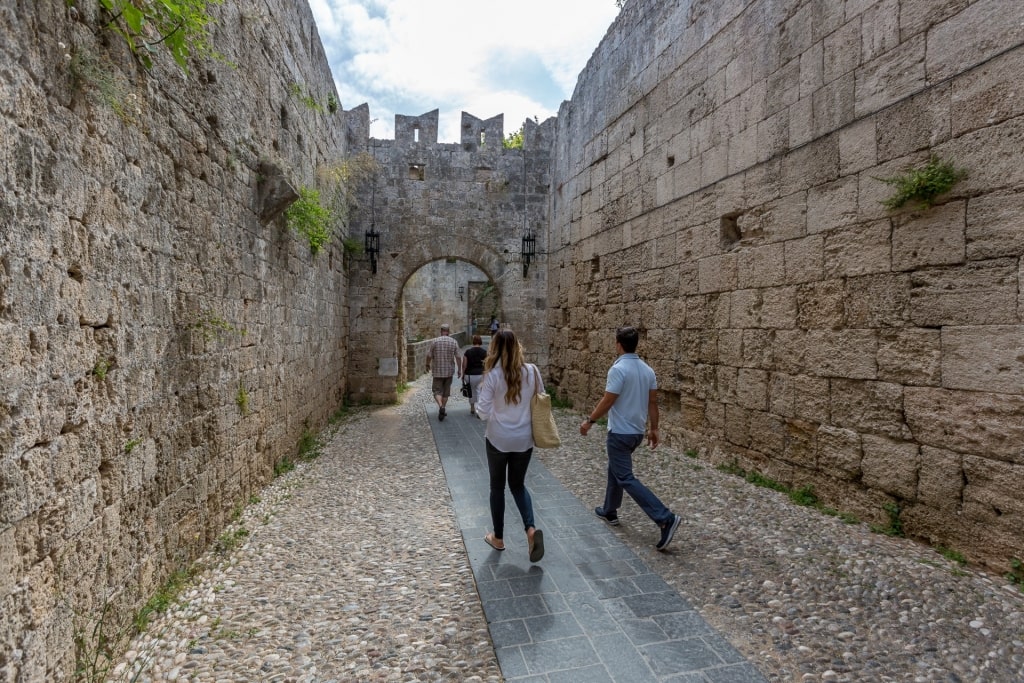
Old Town Walls, Rhodes
From 1309 to 1522, the island was the headquarters of the Knights Hospitaller (or Knights of the Order of St John), forming a gateway between Europe and the Holy Land and serving as a block on Ottoman expansion.
The knights’ legacy is an incredible walled citadel with fabulous gothic architecture that can feel like walking through a living museum. Its streets are lined with Greek castles, mosques, squares, and gardens, all dominated by the masterpiece Palace of the Grand Master of the Knights that served as their HQ.
Temple of Poseidon, Sounion
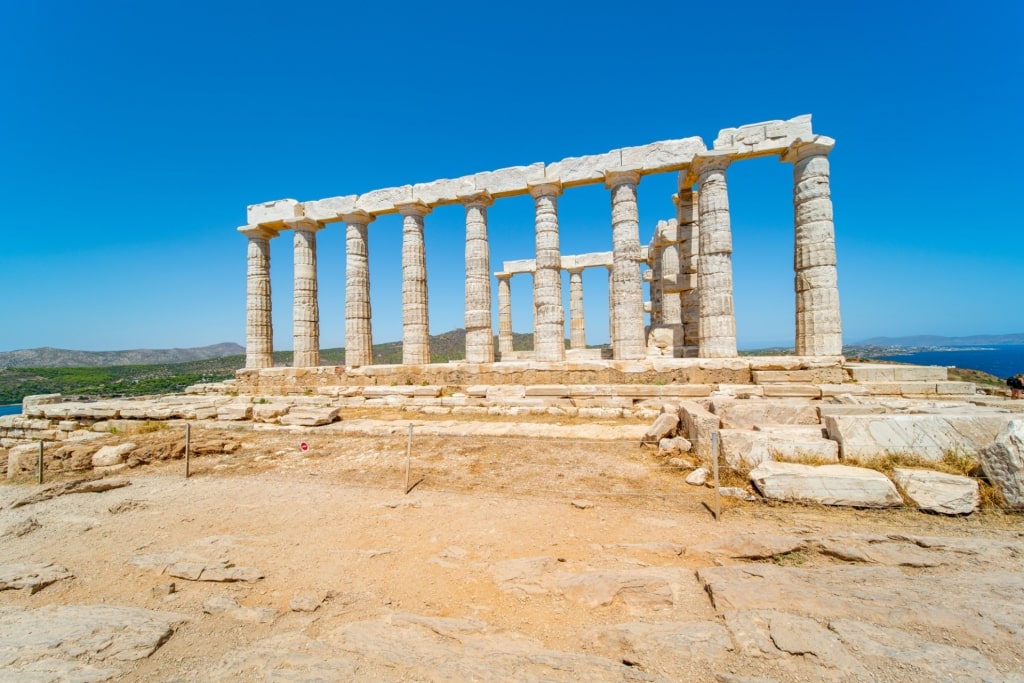
Temple of Poseidon, Sounion
Dedicated to the sea god Poseidon (or Neptune), this graceful temple sits on a hill at the very tip of the Athenian Riviera, around an hour’s drive from the city center.
The Greek ruins are impressive, with incredible views over the Aegean Sea, but the legend behind this vantage point over the ocean further adds to the romantic setting.
According to the myth, the Athenian prince Theseus headed to the island of Crete to take on the dreaded minotaur, a half-man, half-bull monster, in his Minoan labyrinth.
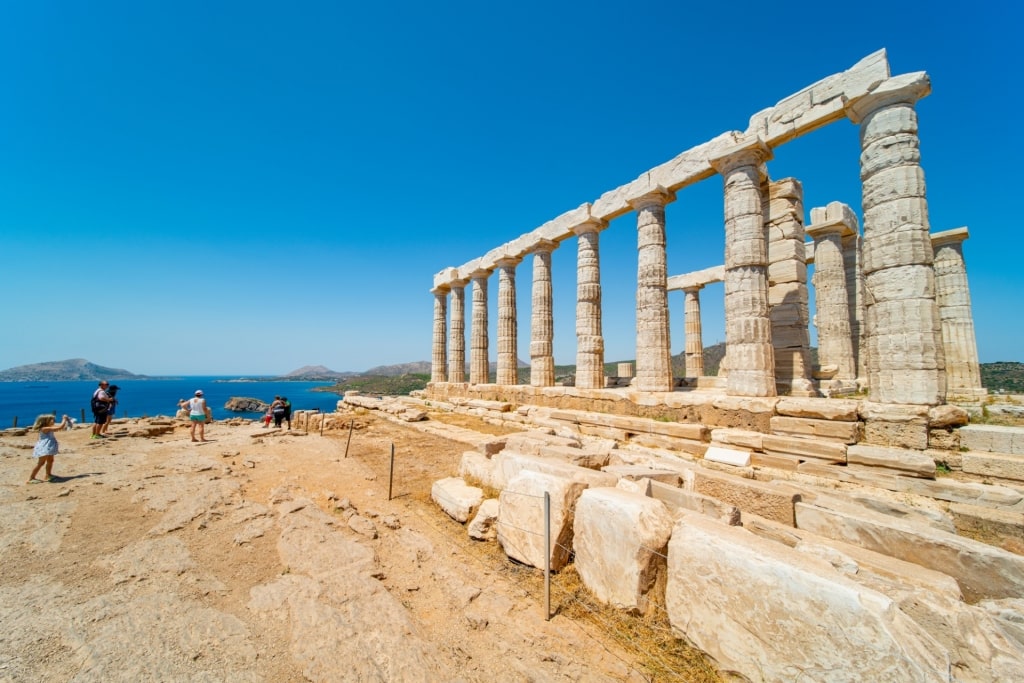
Temple of Poseidon, Sounion
Returning victorious to Athens, Theseus was supposed to change the sails of his boat to white rather than black to herald victory. But he forgot to do so. Spotting the black sails and believing his son to be dead, Athenian king Aegeus threw himself from the cliffs at Sounion into the sea below.
This tragic death is said to have given name to the Aegean Sea but also created what many Greeks believe to be the country’s most beautiful sunsets.
Navagio Beach, Zakynthos
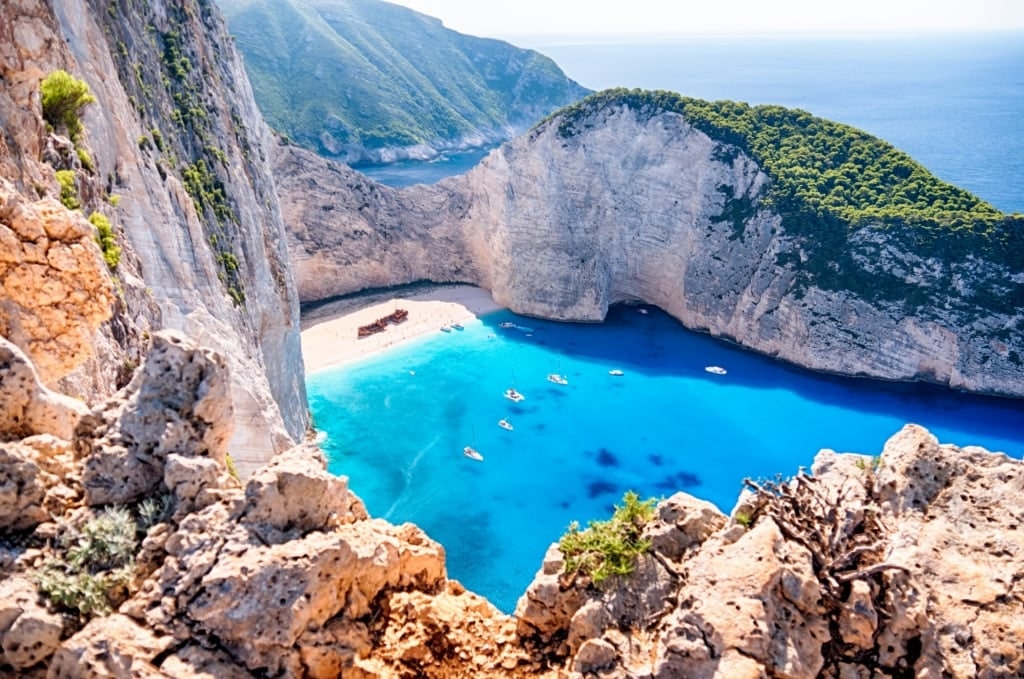
Navagio Beach, Zakynthos
The most photographed beach in Greece? Quite probably. Navagio, meaning “shipwreck”, on the north-western coast of Zakynthos in the Ionian Sea takes its name from it being the final resting place of the MV Panagiotis, which beached here in a storm in 1980.
The origins of the wreck remain unclear, with some claiming it was a smuggler ship and others saying it was simply an accident. What is for sure is that the Panagiotis’ sinking brought this beautiful Greek beach much international acclaim.
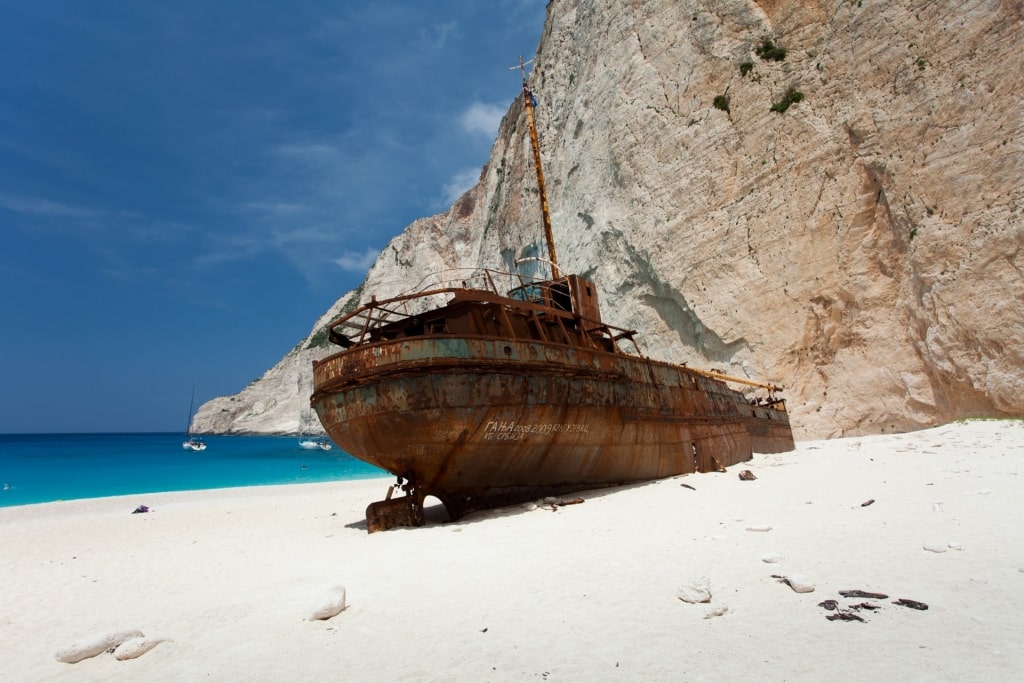
Navagio Beach, Zakynthos
Reached either from the water or an arduous hike down steep white cliffs (and back again), the beach consists of an incredible arc of white sand kissed by equally perfect turquoise waters. The rusting hulk of the wreck is a stark contrast to this beauty, but makes a dramatic backdrop to photographs nonetheless.
Corinth Canal, Corinth
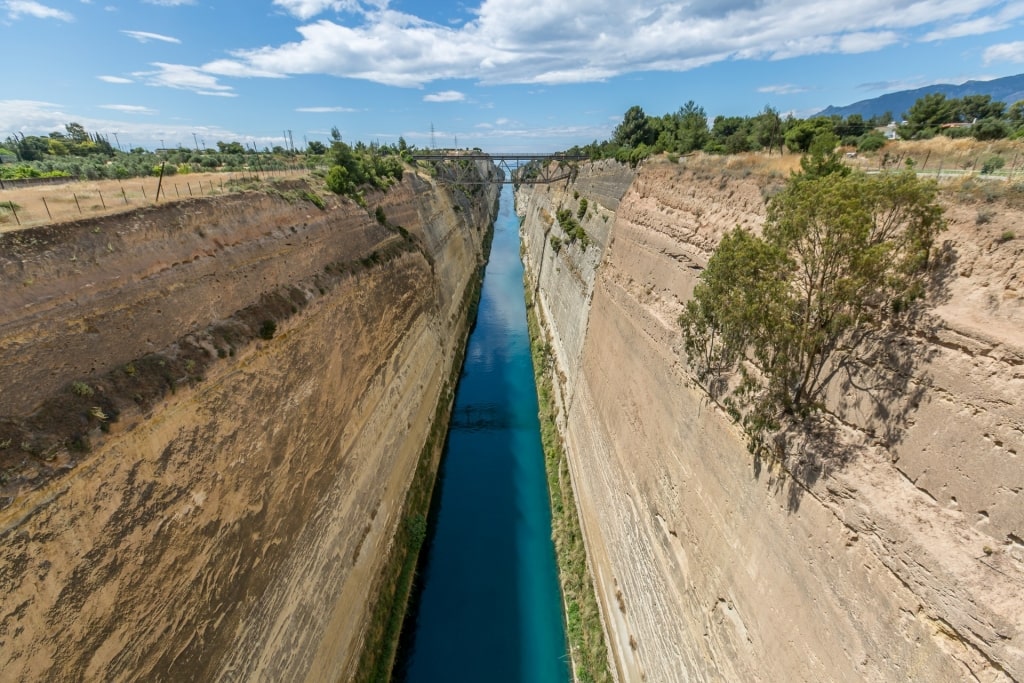
Corinth Canal, Corinth
For a seafaring nation like Greece, the Isthmus of Corinth, the narrow strip of land that connects the mainland to the Peloponnese, was nothing short of an inconvenience.
Sailing around the vast peninsula would add some 180 miles for any journey from the Aegean to the Ionian Sea, adding hours if not days to a journey.
The problem is not a modern one: cutting through the land to create a canal passage was first mooted in the seventh century BC and even Julius Caesar had a failed attempt to construct the shortcut. It was not until the late 19th century that a project was finally budgeted for, and construction began on the four-mile canal.
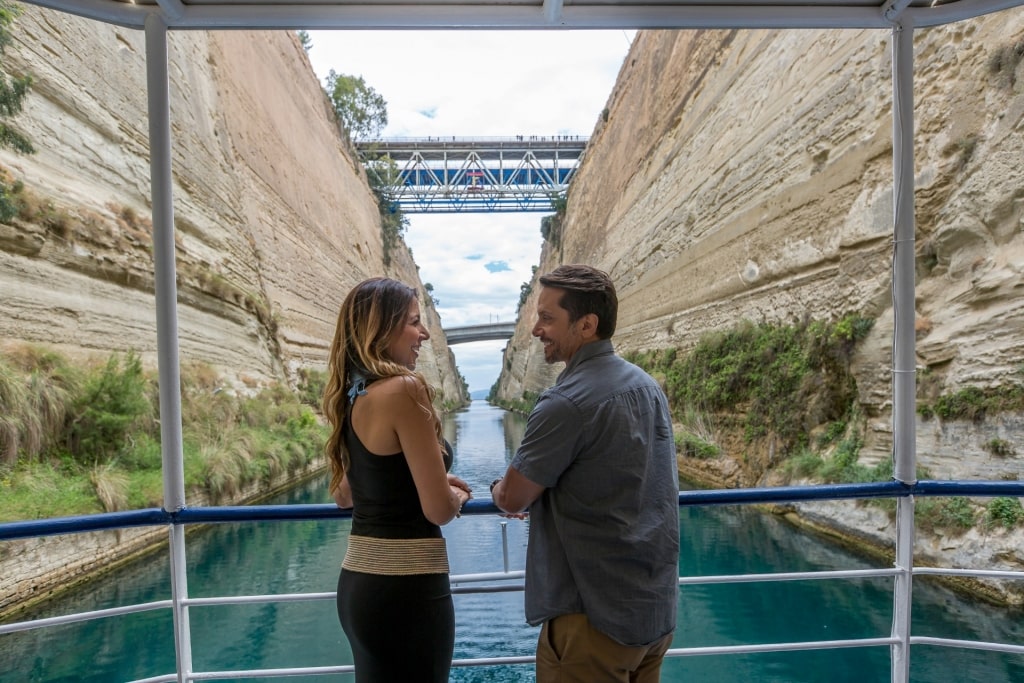
Corinth Canal, Corinth
Dug almost entirely by hand and completed in 1893, the passage never quite took off as hoped thanks to the maximum boat beam that can sail its length being just 74 feet. Nonetheless, it remains a remarkable feat of engineering, especially when viewed from the pedestrian bridge some 170 feet above the water below.
If you get the chance to travel through by boat, the sight is extraordinary; in places, the canal is so narrow you feel as though you can touch the sides.
Old Venetian Port, Chania
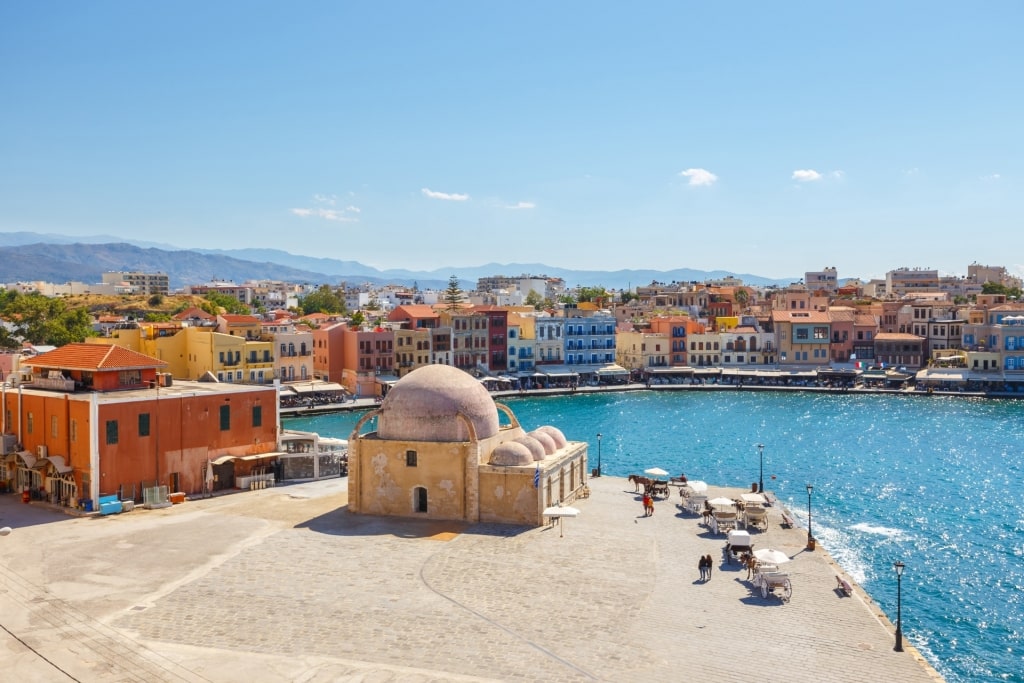
Old Venetian Port, Chania
Located in one of the most beautiful villages in Crete, Chania’s striking Old Venetian Harbor is one of the island’s biggest draws.
It was constructed between 1320 and 1356 by the Venetians who occupied Crete at a time when it was considered one of the Mediterranean’s most important shipping and trading centers.
Built on a perfect arc, the port’s buildings are, as one might expect, more in line with what you would expect to find in Venice rather than on a Greek island—elegant townhouses, painted in bright colors.
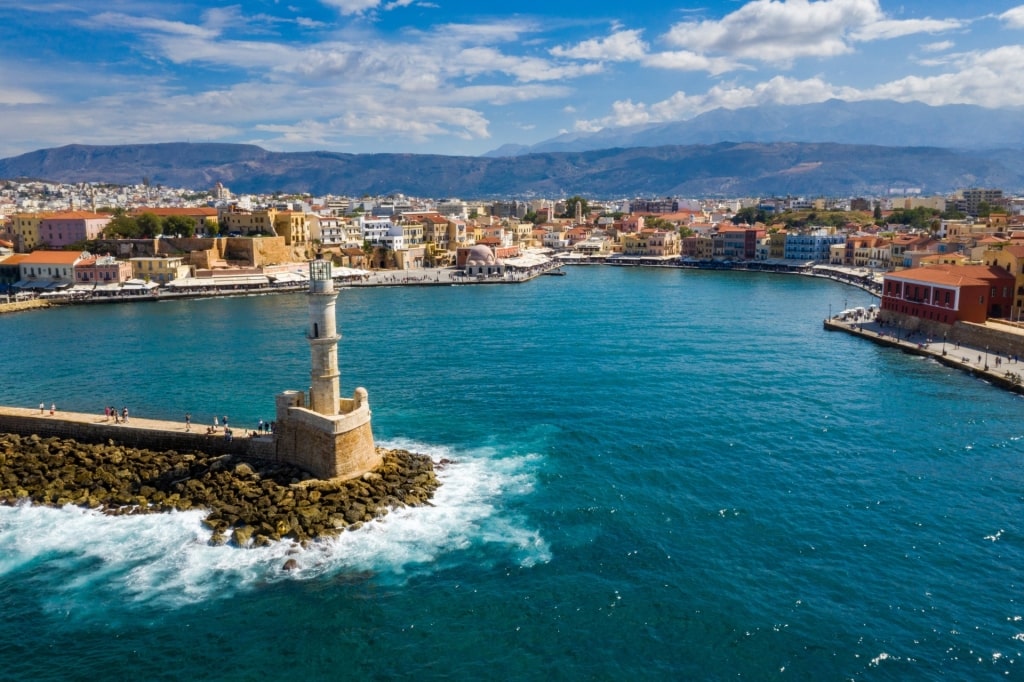
Old Venetian Port, Chania
This pretty setting is home to one of the most famous lighthouses in the world, as well as dozens of chic, independent shops and restaurants, while the maze of streets behind the seafront are perfect for exploring.
Be sure to head to the lighthouse before evening—the sunsets that Greece is known for are quite spectacular.
Read: Best Beaches in Crete
Kanali tou Erota, Corfu
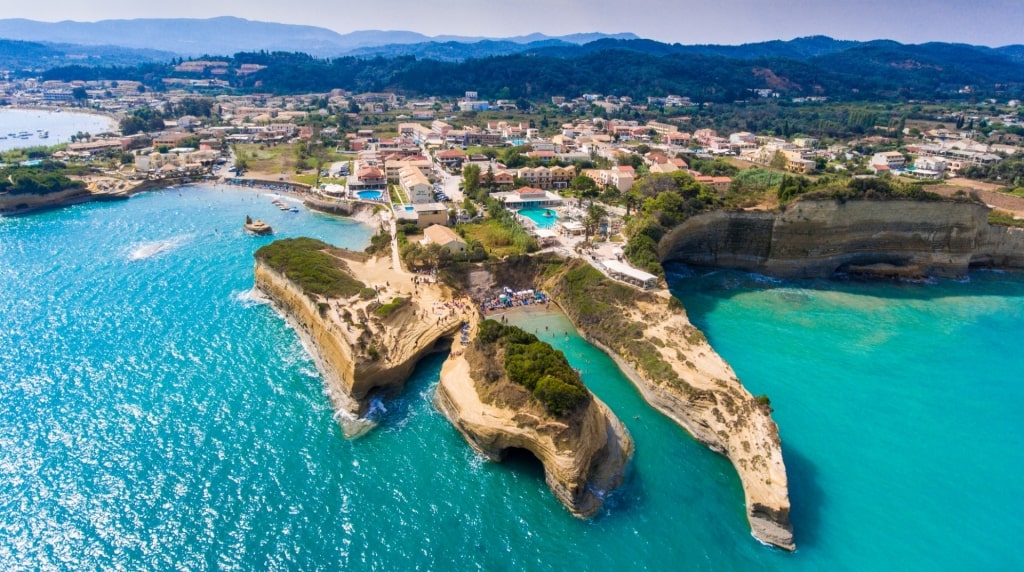
Kanali tou Erota, Corfu
Overlooking the Ionian Sea, this small Corfu beach sitting between a fork in the rocks is so impossibly romantic it’s been named the Canal d’Amour (Love Channel).
This is thanks to a local legend that deems any man who swims in the water here is bound by destiny to find his true love when he returns to the beach.
While this might be a stretch of the imagination, Kanali tou Erota is one of the most romantic places in Greece where it has many rivals for people’s affections.
Oia, Santorini
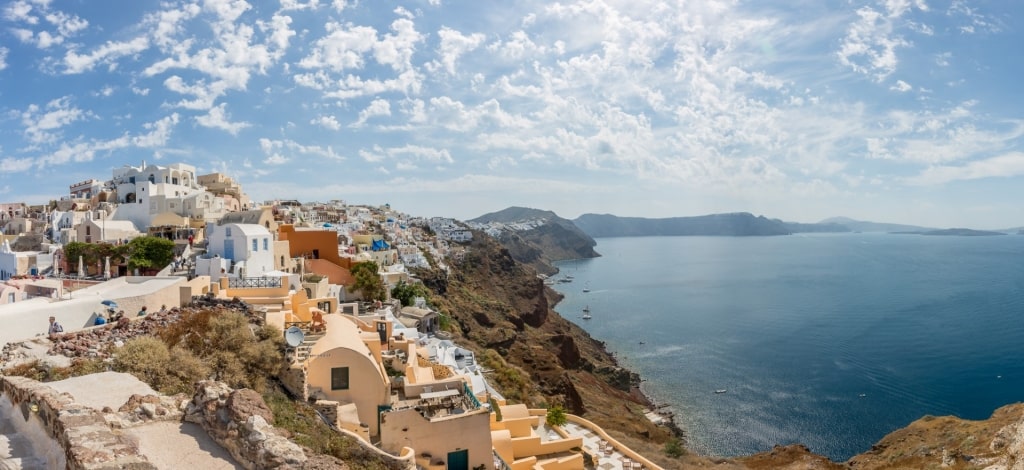
Oia, Santorini
For sheer jaw-dropping beauty, few places in Greece match the island of Santorini. Sitting on the edge of a sunken volcanic caldera, where two lava islands smoke away at its heart, most of its villages, with their perfect sugar-cube houses and blue-domed churches, seem to cling to the cliff tops as the deep Aegean laps below.
Fira is the high-end capital and Imerovigli’s plush hotel infinity pools take pride of place on many magazine covers. But the small villa of Oia is probably the island’s prettiest spot and one of the most beautiful places to photograph in the world.
Set at a high point above the water, its bars and cafés look out to sea beyond Crete towards Africa, and people gather here every evening to pay homage to sunsets that rival those seen at Cape Sounion.
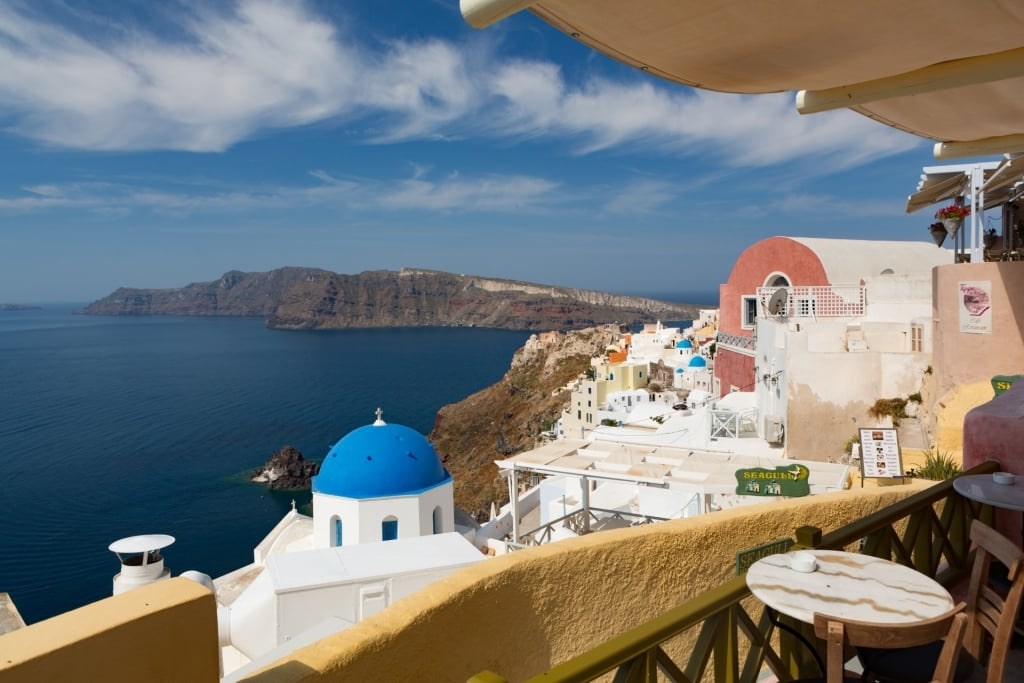
Oia, Santorini
Lose yourself in the narrow streets, shop for floaty summer fashions, and choose a restaurant with views across the caldera back to Fira for a long lunch.
The mountain village of Oia is where you’ll find that money shot of the blue-domed church with the caldera in the background, too, but you’ll need to pick your time to catch the perfect image, as many others have the same idea.
Read: Best Beaches in Santorini
Theater of Epidaurus, Epidaurus
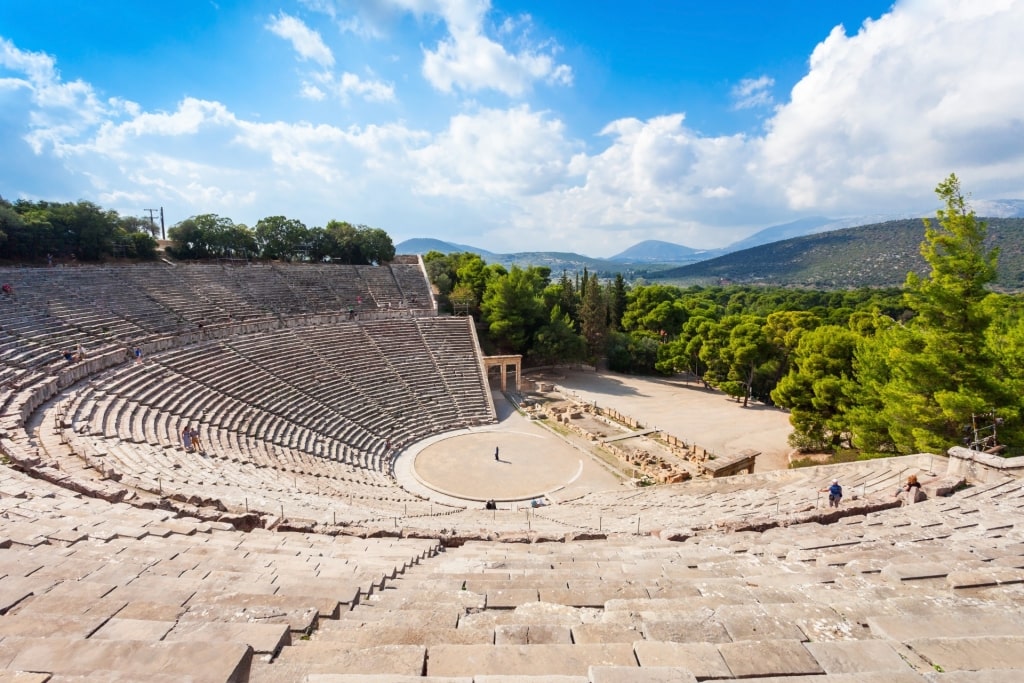
Theater of Epidaurus, Epidaurus
In a country not short of majestic ruined ancient theaters, the structure at Epidaurus rules supreme.
With a capacity of 16,000, it has magnificent acoustics that require no microphones. You can put this to the test on a visit by sitting at the top tier of seats and seeing if you can hear people on the stage.
As well as the fact that Epidaurus is an incredible piece of engineering and design, sitting on one of the marble seats, the scent of wild herbs on the breeze, is redolent with romantic history as you imagine the hundreds of thousands of people who have seen the same view over the millennia.
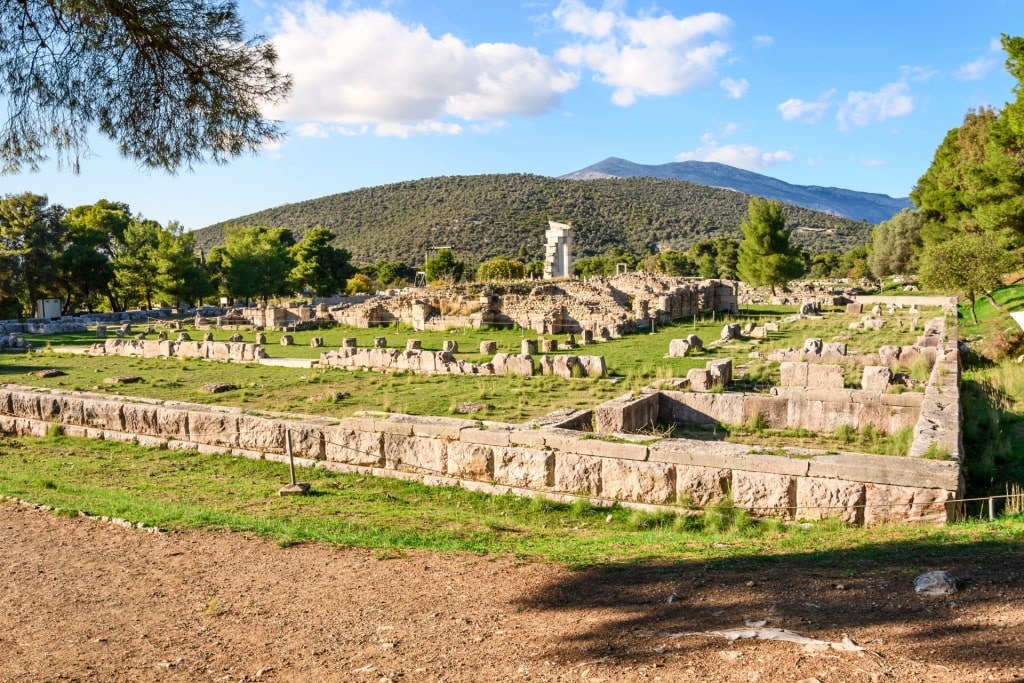
Sanctuary of Asclepius, Epidaurus
There’s a summer program of shows here that are well worth catching, as are the surrounding gardens in the Sanctuary of Asclepius, dedicated to the Greek god of healing.
Read: 7 Days in Greece: The Ultimate Itinerary
Old Town, Corfu
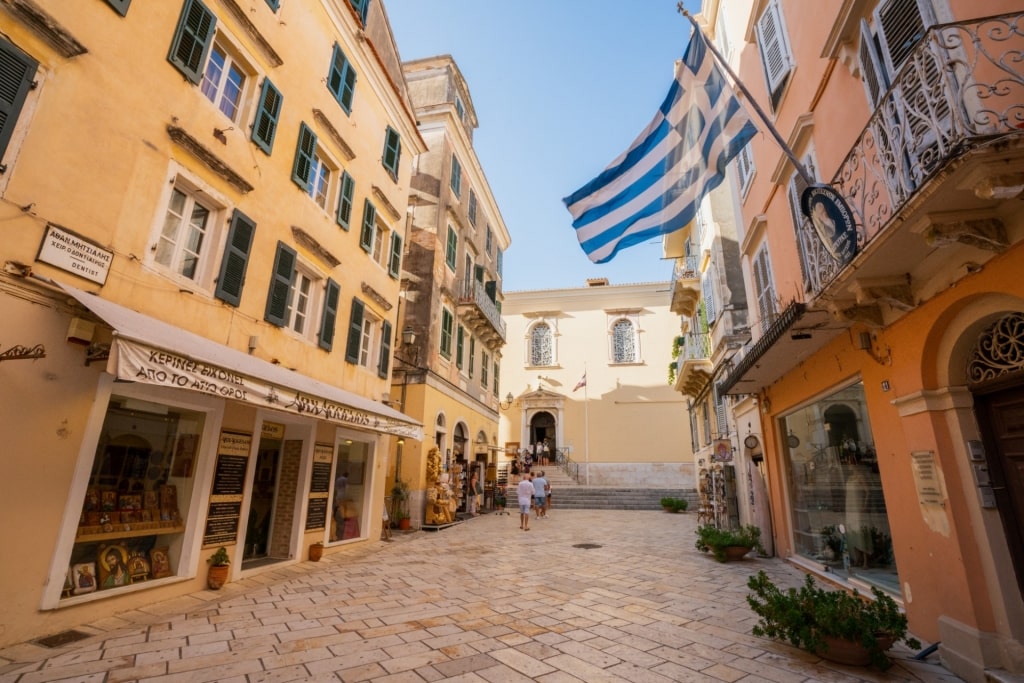
Old Town, Corfu
Visiting the impressive and imposing Corfu Old Town, which plays host to not one but two fortresses, is one of the best things to do in Greece. The Venetian-era “Old Fort” dates from the early 15th century and sits on an island separated from the main town by the manmade Contra Fossa canal.
Set on a hilltop with vistas out to the mainland and the pine-fringed Albanian coast, it also offers impressive views back over the rooftops of Corfu’s Old Town to the New Fort, which is “new” only by comparison to its sibling, being built between 1576 and 1645 to help ward off invasion by the Ottomans.
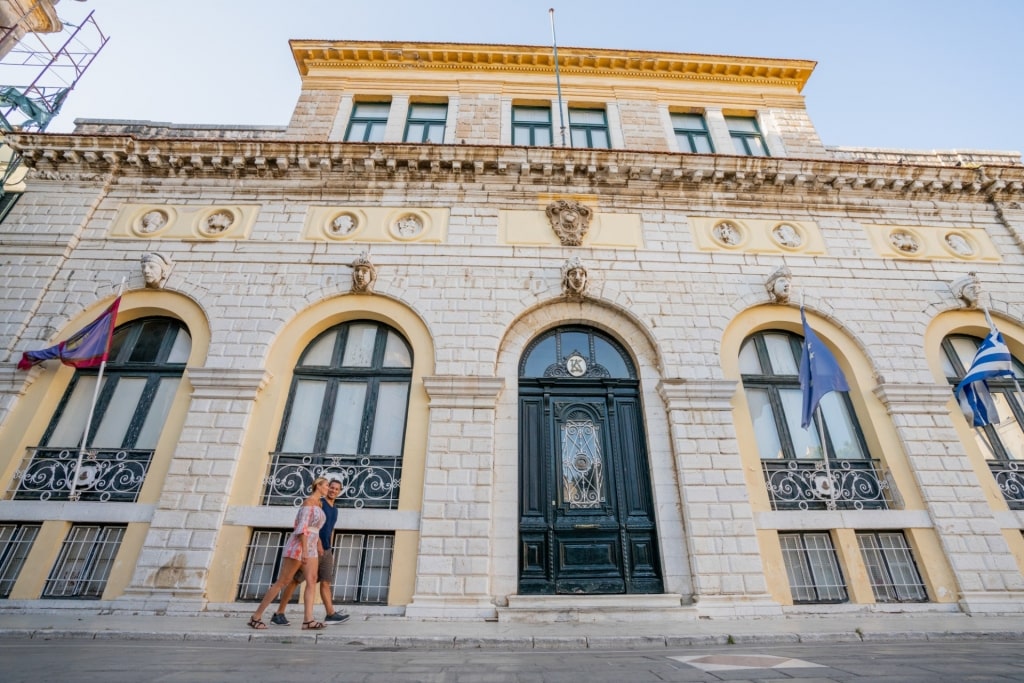
Old Town, Corfu
The enchanting Old Town that separates the two is home to a mix of Byzantine and Venetian architecture, high-end shops, art galleries, the impressive Jewish quarter, and the 1580s basilica Holy Church of Saint Spyridon, which is home to the remains of the island’s patron saint after which the church is named.
Little Venice, Mykonos
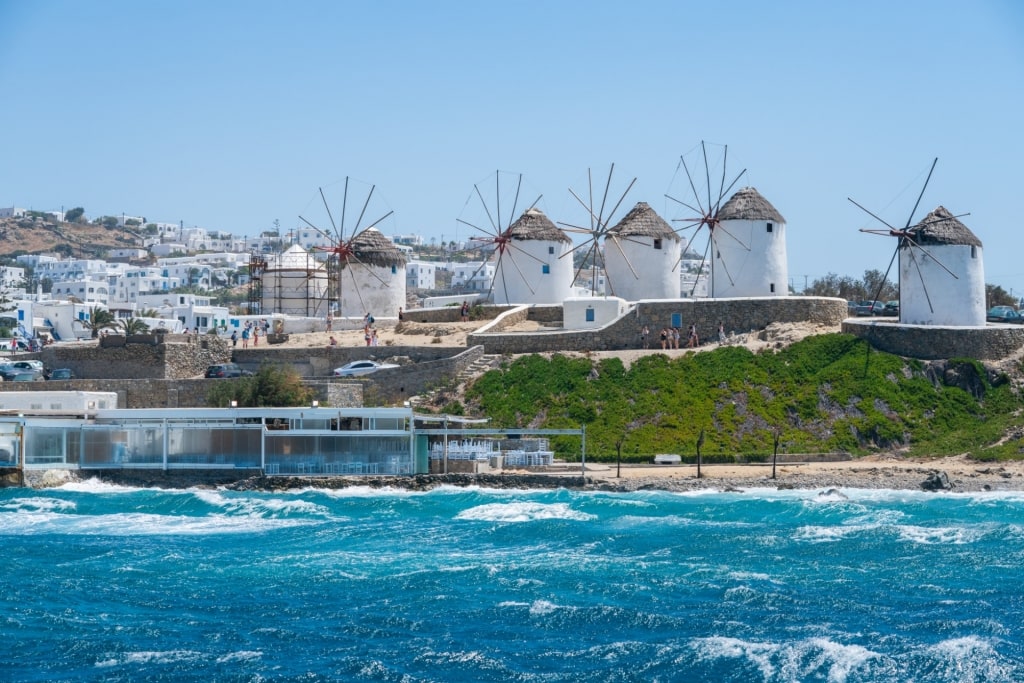
Little Venice, Mykonos
Mykonos is well-known as Greece’s upmarket party island, as loved today by the LGBTQ+ community as it was in the 1950s by Hollywood celebs and their counterparts in the Greek film industry.
The port, with its pretty, iconic windmills, chic cafés and bars, jewelry shops, and big-name designer boutiques retains its own charm.
One of the best things to do in Mykonos is to visit Little Venice, a small community of Venetian-era buildings, many of which have brightly painted balconies or terraces that look over the small harbor around which they are situated.
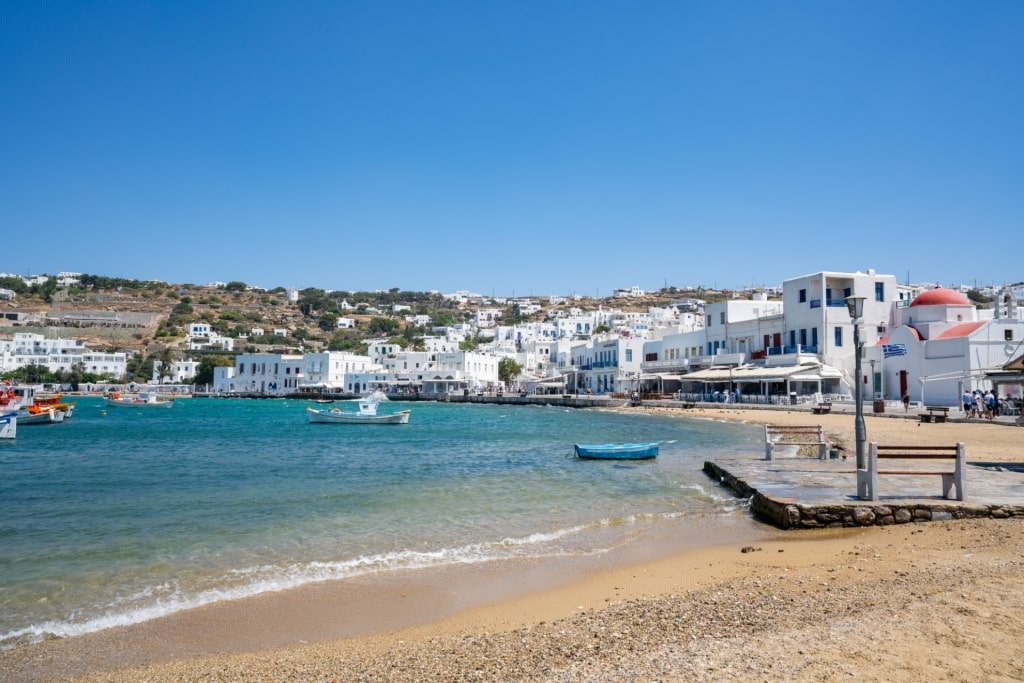
Little Venice, Mykonos
Given the long period of Venetian rule in the 1500s, architecture influenced by the Greek islands’ former occupiers is not particularly unusual, but in few places do the houses kiss the water as they do here.
Many of the buildings are now in the hands of cool galleries and hip bars, and overlooking this harbor from a terrace with a drink in hand is as pretty as Greece can get.
Read: Best Greek Islands for Beaches

Mykonos
Do you want to be captivated by the extraordinary beauty of Greece? Browse Celebrity’s Greece cruises and plan your Aegean adventure.


